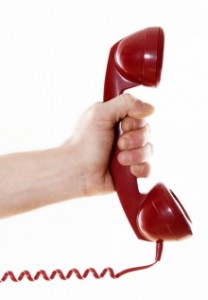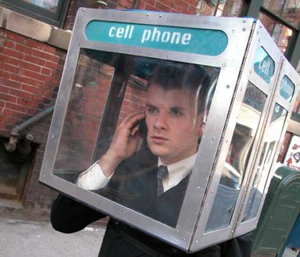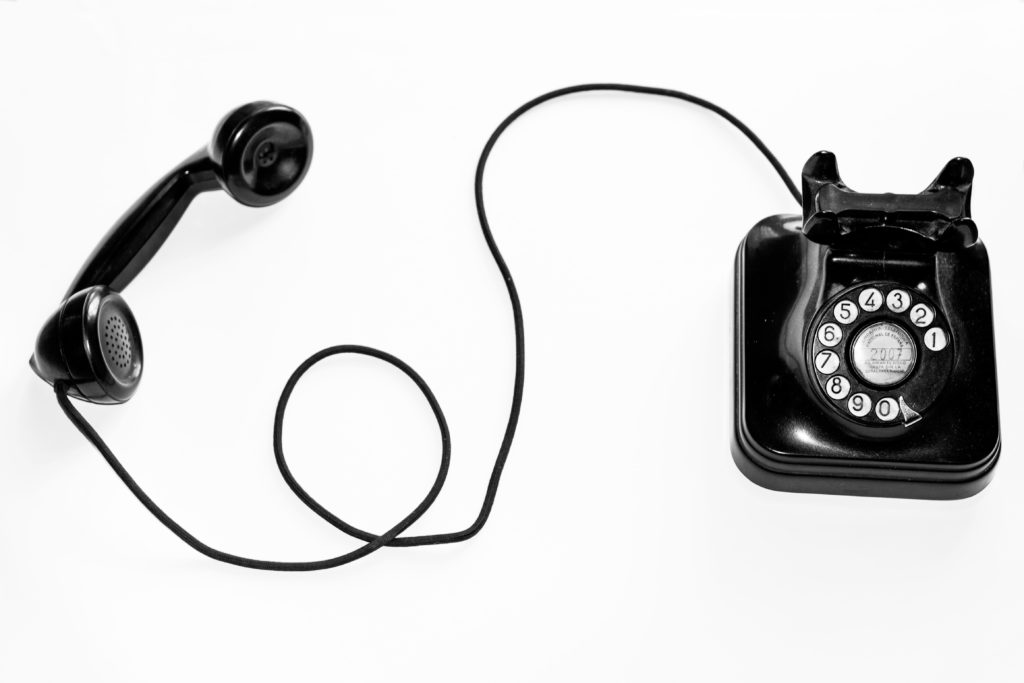Ah, the humble phone message.
Thanks to texting, voice mail is becoming less common. But until it disappears altogether, it’s to your advantage to know how to leave clear messages.
In fact, a phone message is sort of like a thank you note: You can earn big respect by leaving a good one… and lose points if your message is annoying or rude.
Before we talk about what I mean by a “good phone message,” here are three examples of messages that don’t work, and that make at least some people (like me!) grind their teeth:
1. The Dead-End Phone Message
 Someone recently left their number on my voice mail, and asked me to call them back.
Someone recently left their number on my voice mail, and asked me to call them back.
When I did, I got a recording that said,
Hi, this is so-and-so. I never listen to these messages, so please send me an email.
Now I didn’t have her email address, and she didn’t offer it in her message, so that was the end of that story.
When you’ve called someone else (presumably because you want something), you can make it easy for them to respond by:
- Leave instructions that aren’t a dead end. If you leave a phone number that doesn’t have voice mail, specify that people should text. If you leave an email address, make sure it’s one you actually check!
- Even better, leave two ways for them to reach you in your original message, so that they can pick the one they like best.
On the other hand, don’t be so specific in your instructions that you end up leaving…
2. The “Call at My Convenience” Phone Message
Here’s another type of message that asks you to jump through hoops:
Hi, this is so-and-so, and I’d like to speak with you about whatever-whatever. My number is X. You can reach me between 10:40 and 11:15AM or 3 and 4:30PM on Wednesday; between 4:30 and 5:50 on Thursday, and between noon and 2:45 on Friday.
Think about what this person is asking:
You’re supposed to take note of their schedule; plug it into your own already bulging calendar; and call them back at a time that they’ve specified.
If it’s really critical that you two speak between those very particular hours, it’s better to:
- Send an email asking for an appointment, or
- Keep trying to phone them during the hours that you’re available. This way, you either catch them or you don’t, but at least the burden’s on you, not them!
3. The Information-Free Phone Message
The messages above both asked too much of the listener, and the second one shared too much information (do we really need to know your entire schedule?).
But you can go too far in the other direction by leaving messages that have too little content, such as:
This is X. My number is Y. Call me back.
This type of cryptic message is fine for your friends, but not at work.
Business people aren’t into guessing games; and many of them will just decide that, if you don’t have time to explain why you called them, they don’t have time to call you back.
To Leave a Good Phone Message, Speak Slowly, Clearly, and Repeat
So exactly what does make a phone message work?
As with most things in public speaking, your goal should be to make it easy for the other person to understand you — or in this case, to reach you and start a conversation.
 The most basic way to achieve this goal is to make sure that what you say is audible, meaning: It can be heard!
The most basic way to achieve this goal is to make sure that what you say is audible, meaning: It can be heard!
To that end,
- Speak slowly and clearly.
- Pause between each thought.
- Spell out whatever isn’t obvious (like the name of your company, which you know but they don’t!)
- Repeat your own name and number (or the other contact info they should use to reach you) twice.
And remember: Speaking slowly and clearly, with pauses, is even more important when you’re calling on a cell phone, because the sound produced over cell phones is already harder to hear than sound on a land line.
And what about your actual message? My go-to phone message sounds like this:
Hi. (pause) My name is Jezra Kaye. (pause) That’s J-E-Z-R-A, and my last name is K-A-Y-E. (pause) I’m calling about the bicycle you’re selling. (pause) If it’s still for sale, please call me at 123-456-7890. (pause) That’s 1-2-3 (pause) 4-5-6 (pause) 7-8-9-0. (pause) Again, this is Jezra Kaye, calling about the bicycle, and I’ll try you again later. (pause) Have a great day.
As this example shows, a good phone message is a “paint by the numbers” exercise, where you fill in each pre-determined step with color. (This is true for good thank you notes, too.)
Here are the steps I try to follow. Adjust them for your own language, style, and situation, and you’ll be good to go from now on!
STEP 1: State Who You Are and What You Want
Here are some examples taken from my world that could easily be repurposed for your situation:
- My name is John Doe, and I’d like to know more about your speaker coaching services.
- You don’t know me, but I got your number from my friend Jane Doe. She thinks you’d be a good keynote speaker for my organization’s conference in June, and I’d like to talk to you about that.
- Hi, my name is Doe. I need to speak with you really soon because I have to give a speech in 10 days and I just realized I have no idea what I’m doing!!
STEP 2: Make It Easy For Your Listener to Respond
While you’re making it easy for your listener by leaving clear information about how to reach you, also let them know that you’ll keep trying to make the conversation happen:
- If you’re able to call me back tonight, I’ll be working until 10. Otherwise, just call me at your convenience.
- Here’s my number, in case you have a chance to call; and I’ll try you again tomorrow.
- I’m going to be hard to reach this week, but if there are times that are good for you, let me know and I’ll call you back then.
STEP 3: End With an Appreciation
When you’re the person who wants something (in this case, you want to reach the other person), it’s important to let them know that you appreciate whatever effort they can make. You can do this in a whole range of ways, from simple to elaborate, by saying:
- Thanks!
- Thank you for getting back to me.
- I know you’re busy, and I appreciate you taking the time to call me back.
To Leave a Great Phone Message, Smile!

A mouth that’s frowning produces different sounds than a mouth that’s smiling. And, whether they know it consciously or not, people can hear from the sound of your voice whether you were smiling when you left a message.
Wouldn’t you rather return a call to someone who’s smiling than someone who’s frowning? Me, too!
So, smile when you leave a phone message, because your smile is a message, too.

